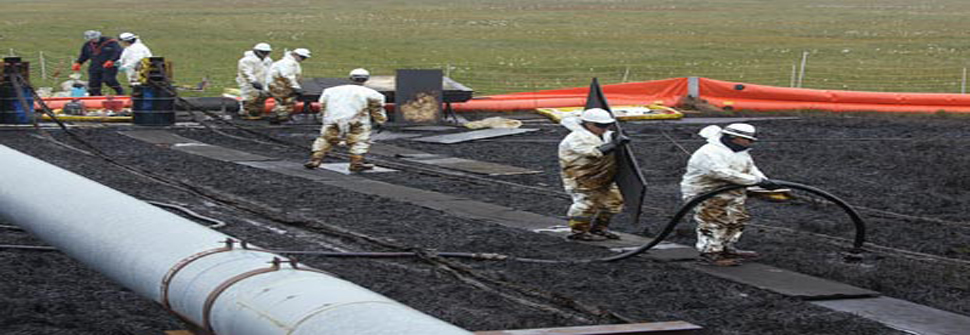BP Spill: Alaska Pipeline Ruptures, Methanol And ‘Produced Fluids’ Leak
A pipeline at a BP oil field in Alaska burst over the weekend, spilling between 2,100 and 4,200 gallons of an oily water and methanol mixture in Alaska’s North Slope, reports Reuters and the Anchorage Daily News.
John Ebel, State of Alaska Environmental Program Specialist Emergency Responder, told The Huffington Post that the rupture occurred at an underground portion of the 8-inch pipe while workers were conducting a valve test.
The Anchorage Daily News reports that people who were in buildings near where incident occurred could feel the ground shake from the force of the rupture.
Ebel said that the spill consisted of 60% methanol and 40% “produced fluids,” which include crude oil, water, brine and other substances associated with oil production.
The spill affected about 2,000 square feet of aquatic tundra and nearly 5,000 square feet of a gravel pad, according to a report by the Alaska Department of Environmental Conservation.
The spill occurred at a drill site in the Lisburne Production Facility, only 800 feet from Prudhoe Bay. The report says, however, that “there is no evidence that the released product has migrated away from the area adjacent to the pad.”
From Reuters:
A BP spokesman said the cleanup was under way and the company would determine the cause “in due course.”
Lisburne, which is managed as part of the Greater Prudhoe Bay Unit, has produced no oil since June 18, according to Alaska Oil and Gas Conservation Commission records, suggesting maintenance work requiring a prolonged shutdown.
The Anchorage Daily News reports that 630 gallons of the spill had been collected as of Sunday afternoon. According to CNBC, no people or wildlife were hurt in the explosion.
In May, BP said it would pay $25 million as a penalty in a settlement over a 2006 spill in the North Slope.

